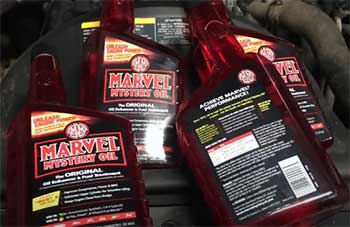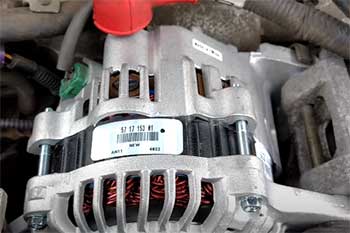If you’re eyeing the Michelin Primacy MXV4 for its promise of quiet comfort and lasting durability, I strongly urge you to reconsider.
While the brand name carries weight and the early performance is pleasant, my personal experience—and that of many other drivers—paints a much less satisfying picture over time.
Let me walk you through everything you need to know.
My Experience with the Michelin Primacy MXV4
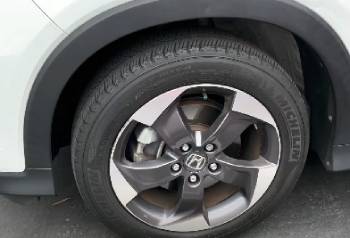
When I first got the Michelin Primacy MXV4, I was driving a mid-sized luxury sedan that I use for daily commuting and long-distance travel.
These tires were marketed as a premium touring all-season solution.
And for a while, they really were.
I noticed right away how quiet they were, especially on the highway.
They felt silky-smooth on freshly paved roads, and cornering was sharp and confident.
Even during light rain, they inspired confidence and I appreciated their firm grip on wet surfaces.
This was all during the first 15,000 miles.
I rotate my tires religiously, check the air pressure monthly, and I don’t drive aggressively.
So, I expected these to easily cross the 60,000-mile warranty benchmark.
But around 25,000 miles, I started noticing some inconsistencies.
Wet traction began fading.
Cornering didn’t feel as tight.
And while the ride remained generally smooth, a kind of high-pitched hum developed—especially around 45–55 mph.
By the time I hit 35,000 miles, I was already searching for replacements.
What made it worse was when I looked into the warranty process.
Michelin requires strict documentation of rotations at specific intervals—something many drivers don’t keep on hand.
So even though the wear was clearly premature, I was out of luck on a claim.
Reading through online forums and reviews, I realized I wasn’t alone.
Plenty of others echoed my issues: early wear, degraded wet traction, and noise increase.
Some folks even described dangerous hydroplaning situations after just a year or two.
Others had great experiences and hit 70,000 miles.
But the inconsistency is a red flag, especially for a tire that comes at a premium price.
And that’s why, as someone who’s been burned, I think you deserve to hear the full story.
Michelin Primacy MXV4 Road Noise Over Time
One of the most noticeable shifts I experienced with the Michelin Primacy MXV4 was how road noise changed over the tire’s lifespan.
Initially, the tires were whisper-quiet, especially on smooth highway pavement.
But by the time I reached around 25,000 miles, that silent comfort began fading.
A high-pitched hum started to show up, especially between 45 and 60 mph.
This wasn’t tied to road conditions either—I tried fresh asphalt, concrete, and older surfaces, and the issue persisted.
It got worse with more wear.
By the time I crossed 35,000 miles, it almost sounded like a low growl in the cabin during long trips.
If you’re someone sensitive to cabin acoustics, this tire may eventually wear on your nerves.
Who Should Avoid the Michelin Primacy MXV4?
If you drive in regions with wet weather or harsh winters, I would not trust this tire beyond 20,000–25,000 miles.
While it performs well on dry pavement, the fading wet grip and poor ice control make it risky for all-season claims.
Also, if you’re budget-conscious and expect to get the full 60,000-mile lifespan out of your tires, you’ll likely be disappointed.
I’d also caution high-mileage drivers and commuters—you’ll probably be shopping for new tires much earlier than expected.
On the other hand, if you’re a low-mileage driver in a warm, dry climate and prefer a softer, quieter tire at low speeds, it might still be passable.
Maintenance Tips for Michelin Primacy MXV4

- Rotate Frequently: Make sure you rotate these tires every 5,000 to 7,000 miles. Michelin demands strict adherence to this schedule if you want to make a warranty claim.
- Monitor Air Pressure: Underinflated tires wear unevenly and overheat easily. Check tire pressure monthly, especially during seasonal changes.
- Check Tread Depth Regularly: Use a tread gauge. Once you dip below 4/32″ in wet climates, expect traction issues.
- Document All Service Records: If you want to preserve your warranty rights, keep records of every tire service, rotation, and alignment.
- Avoid Overloading the Vehicle: Exceeding load capacity affects wear and compromises safety. Stick to the vehicle’s tire load index.
- Balance and Align Annually: Imbalanced tires and poor alignment accelerate wear. Get an alignment check at least once per year.
- Be Cautious in Winter: Despite the “all-season” label, the Primacy MXV4 struggles in snow and ice.
- Consider dedicated winter tires in colder climates.
- Clean Tires and Inspect Sidewalls: Keep them free of debris and check for cracking or bulging. Even small sidewall issues can lead to blowouts.
- Watch for Road Noise: If your tires start getting louder, it may be a sign of internal wear. Don’t ignore it.
- Store Correctly During Off-Seasons: If you’re switching seasonally, store them upright in a cool, dry place out of direct sunlight.
Pros and Cons of Michelin Primacy MXV4
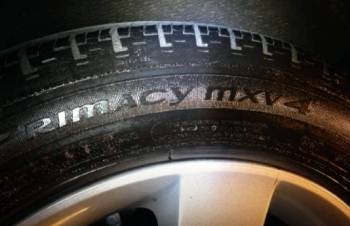
Pros:
- Excellent dry performance, especially in the first 20,000 miles
- Smooth and quiet ride on highways and well-paved roads
- Handles curves and corners with precision during early lifespan
- Suitable for premium sedans and luxury vehicles
- Trusted brand with long-standing reputation
- Active Sipe Technology improves light snow grip initially
- Hydroplaning resistance is strong in the early phase
- MaxTouch Construction promotes even wear (in theory)
- Good high-speed stability and ride comfort
- Great OEM fit for many mid-size and larger cars
Cons:
- Treadwear doesn’t match the 60,000-mile promise for many users
- Strict warranty policy makes claiming difficult
- Wet traction drops significantly over time
- Road noise increases noticeably after 30,000 miles
- Light snow traction degrades rapidly as tire ages
- Overpriced for the real-world performance it offers
- Inconsistent wear patterns even with regular rotation
- Poor ice and deep snow performance despite being “all-season”
- Many reports of sidewall weakness and soft compound feel
- High replacement cost without proportional longevity
Michelin Primacy MXV4 Vs. Other Brands
- Michelin Primacy MXV4 Vs. Continental PureContact EcoPlus
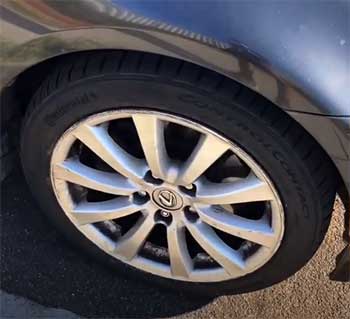
Continental’s PureContact EcoPlus tires promise comfort and fuel savings.
I’ve tested them on a comparable vehicle, and they delivered more consistent traction in rain and light snow.
What impressed me most was the even wear pattern—it felt like they aged gracefully.
Compared to the Michelin, which felt great early and then fell off a cliff, the PureContact had steady reliability.
Comfort levels were slightly less plush, but performance under stress was superior.
If you value consistent traction and efficiency, the Continental has the upper hand.
- Michelin Primacy MXV4 Vs. Goodyear Assurance ComfortTred Touring
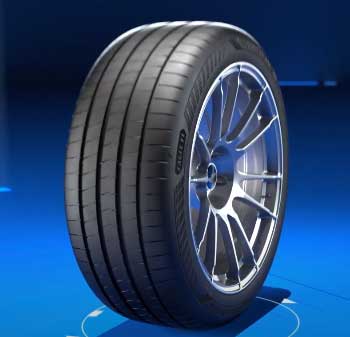
The Goodyear Assurance ComfortTred felt similar in early ride quality.
Smooth, cushioned, and well-suited for city and highway driving.
But unlike the Primacy MXV4, Goodyear didn’t lose its quietness or grip with age.
I noticed the tread wore slower and more evenly.
It handled wet roads and snowy patches better over time too.
For drivers who prioritize longevity and year-round control, Goodyear is a stronger contender.
- Michelin Primacy MXV4 Vs. Bridgestone Turanza Serenity Plus
Bridgestone’s Turanza Serenity Plus is another premium option.
It’s quieter than the Primacy from the start and stays that way longer.
In side-by-side wet performance after 30,000 miles, the Bridgestone held grip far better.
It didn’t offer quite the same dry cornering thrill early on, but its balanced ride made it ideal for long-term ownership.
Noise levels remained low, and tire integrity stayed solid.
In my opinion, Serenity Plus is a smarter long-term buy.
- Michelin Primacy MXV4 Vs. Yokohama Avid Ascend
I’ve used the Avid Ascend on a smaller sedan and was impressed with its value.
It doesn’t try to wow you with ultra-luxury smoothness, but it delivers where it counts: tread life, wet traction, and predictability.
It outlasted the Primacy MXV4 by a clear margin.
And when it started aging, it didn’t suddenly drop off in performance.
For drivers focused on long-term ROI, Yokohama is a practical, smart choice.
- Michelin Primacy MXV4 Vs. Cooper CS4 Touring
The Cooper CS4 Touring surprised me.
At a lower price point, it kept up with the Michelin in dry handling and even outperformed it in mild snow.
It felt sturdy and responsive under braking, and the tread wear was more in line with expectations.
While it lacked some of the refinement early on, it maintained quality longer.
Cooper delivered on value without false promises.
Frequently Asked Questions (FAQs)
Only if you prioritize early ride comfort and don’t mind replacing them sooner than expected. For long-term value, other brands are better.
Light snow, yes. But performance in ice or heavier snow is underwhelming, especially as they age.
Michelin claims 60,000 miles. Realistically, many users report only 35,000–40,000 miles of optimal performance.
Initially, no. But as the tread wears down, road noise and vibrations often increase noticeably.
Final Thoughts
If you’re only concerned about how your tires feel in the first 15,000 miles and you love a quiet, cushioned ride—then maybe the Primacy MXV4 has a place on your car.
But if you’re like me and want consistent traction, durability, and honest value for your money—then I can’t recommend these in good faith.
There are simply too many competing options that offer better long-term performance, better warranty support, and more predictable aging behavior.
Michelin makes some great tires.
But in the case of the Primacy MXV4, it doesn’t live up to the expectations its name sets.
